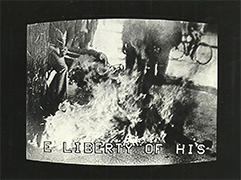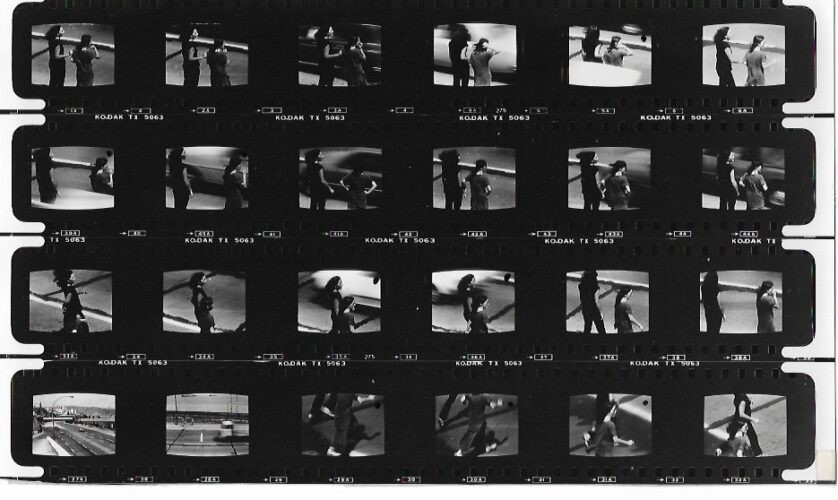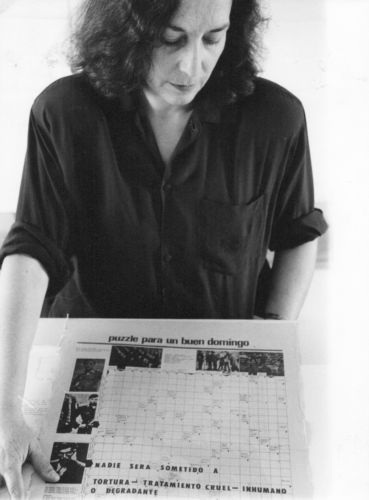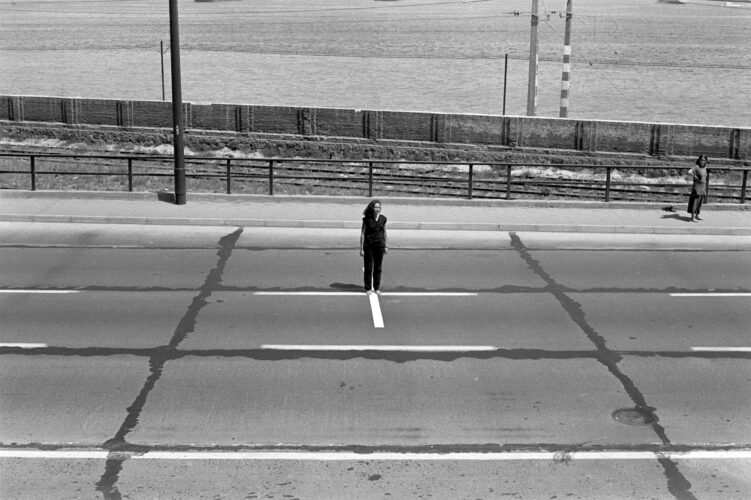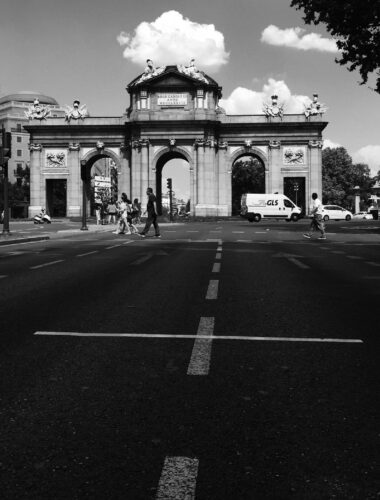EXPOSICIONES
By Pass. La frontera del signo
Lotty Rosenfeld
4 jun. — 7 sep. 2025
Círculo de Bellas Artes
— Madrid
Inauguración
3 de junio, 19h
Comisariado por
Marta Dahó y Alejandra Coz Rosenfeld
Organiza
Ministerio de las Culturas, las Artes y el Patrimonio del Estado de Chile, Círculo de Bellas Artes y PHotoESPAÑA
Colabora
Fundación Lotty Rosenfeld
Horarios de la sede
Lunes cerrado
Martes a domingos
11:00-14:00
17:00-21:00
Sede
Círculo de Bellas Artes
Alcalá, 42
Entrada
Mapa
Figura clave del videoarte en Latinoamérica, Lotty Rosenfeld (Santiago de Chile, 1943-2020) fue autora de una obra inclasificable, situada en la confluencia de su lucha política contra la violencia de Estado y una concepción de las imágenes como espacio de libertad, imprescindible para transformar el presente.
Durante los años de la dictadura de Pinochet, cuando las calles estaban vetadas a toda manifestación ciudadana y el registro fílmico o fotográfico prohibido, su trabajo emergió a través de una serie de intervenciones en el espacio público que desafiaban el silenciamiento impuesto por el poder político-militar, al tiempo que interpelaban a la comunidad a imaginar otras formas de participación colectiva. La fuerza de sus primeros gestos marcó toda su obra posterior.
Uno de los centros vitales de su práctica artística consistió en situarse con su cuerpo donde no estaba previsto estar. Más específicamente, en señalar aquellos signos cuyo poder para organizar la economía de la vida había sido naturalizado hasta volverse invisible a todo cuestionamiento crítico. Desde esos puntos, elegidos con precisión quirúrgica, Rosenfeld intervino generando interferencias con sus acciones y el movimiento de sus imágenes, cuyos efectos fueron, y siguen siendo, fundamentales.
La Bolsa de Comercio de Santiago, espacios transfronterizos, casas de empeño o los centros de máximo poder institucional fueron algunos de los lugares donde decidió trabajar con el propósito de cuestionar los mecanismos de la desigualdad social, la exclusión y la normatividad de las conductas o del género. En este sentido, su obra audiovisual, caracterizada por un radical entrecruzamiento de materiales, lenguajes y archivos, opera como un auténtico bypass, abriendo una posibilidad creativa allí donde la vida y sus fuerzas han quedado obstruidas.
A key figure in video art in Latin America, Lotty Rosenfeld (Santiago de Chile, 1943–2020) was the author of an unclassifiable oeuvre, situated at the confluence of her political struggle against state violence and a conception of images as an essential space of freedom for transforming the present.
Her work erupted during the Pinochet dictatorship, when the streets were off-limits for any citizen demonstration and taking films or photographs was forbidden. Through a series of public space interventions, she challenged the silence imposed by the political-military power while also urging the community to imagine new forms of collective participation. The impact of her first actions marked all her subsequent works.
One of the cores of her artistic practice entailed situating herself with her body in unexpected places. More specifically, she highlighted signs whose power to organise the economy of life had been so naturalised that they became invisible to critical questioning. Rosenfeld intervened from those points, chosen with surgical precision, as her actions and the movement of her images generated waves of interferences, whose effects were—and still are—fundamental.
The Santiago Stock Exchange, cross-border places, pawn shops, and epicentres of institutional power were just some of the sites where she chose to work, aiming to question the mechanisms that instilled social inequality, exclusion, and the normativity of behaviours or genders. In this sense, her audiovisual work, characterised by a radical intersection of materials, languages, and archives, operates as a true bypass, opening up new possibilities wherever life and its creative forces have been obstructed.


